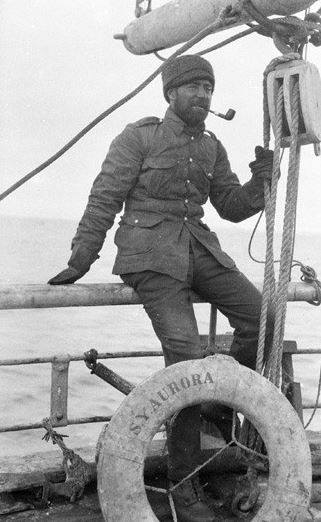
AN AUSTRALIAN ALONE IN ANTARCTICA
While at university Moreton Henry Moyes was profoundly influenced by his geology lecturer, Douglas Mawson, and this led him to successfully apply to join Mawson’s Australasian Antarctic Expedition in 1911 as a meteorologist.
Mawson landed at Commonwealth Bay in Antarctica but Moyes and seven other men were transported over 2000km further west in the expedition’s ship the Aurora. Unfortunately they were forced to land 500km from their intended site and ended up on the Shackleton Ice Shelf.
The Aurora then returned to Hobart but its crew were the only ones who knew where Moyes’ team had been dropped. If anything happened to the Aurora no-one would know where they were.
Moyes was originally meant to stay at a small hut with Charles Harrisson. Harrison had set off on a sledging journey to set up a food depot with the other team members.
Unfortunately for Moyes the team lost a sledge and needed Harrison and his sledge to continue on with them, effectively abandoning Moyes to the hut for the next ten weeks.
Can you imagine what that would be like? Moyes was completely alone in Antarctica.
He wrote in his journal ‘the reason so many men have gone mental down here is not just the doing nothing but the dreadful silence. The silence is really heavy, it’s oppressive, there’s nothing to make the slightest noise.’ and later “The silence is so painful now that I have a continual singing in my left ear”
Perhaps what preserved his sanity was the fact that he set up a routine. He read the bible, hunted skuas (an Antarctic bird), read books, played a gramophone, kept a journal and did meteorological work.
He encountered winds of 240 km/h, feared for his life and was constantly worried about the fate of Harrison and his party.
But finally after 10 weeks alone, on January 6th, 1913 the party returned. Moyes thought he was imagining things when he heard singing. It was the sledging party singing a sledging song.
“I rushed outside, and nearly crazy with delight saw a sledge party approaching with all flags set,” he wrote. “Joyfully, I counted four men and stood on my head, recognising that Harrisson must be one. They’d been in the same state about me as I have about Harrisson.”
Later that year he would leave Antarctica and on his return to Australia would become headmaster of a coaching college. He made further trips to Antarctica in 1916, to rescue Shackleton’s Trans-Antarctic Expedition, and again in 1929.
In recognition of his three Antarctic expeditions Moyes was awarded Polar medals in silver and bronze and a bronze clasp; he was appointed O.B.E. in 1935.
Moreton Henry Moyes is commemorated by several Antarctic place-names and his time alone in Antarctica is still regarded as one of the longest periods of isolation on the Antarctic continent.

